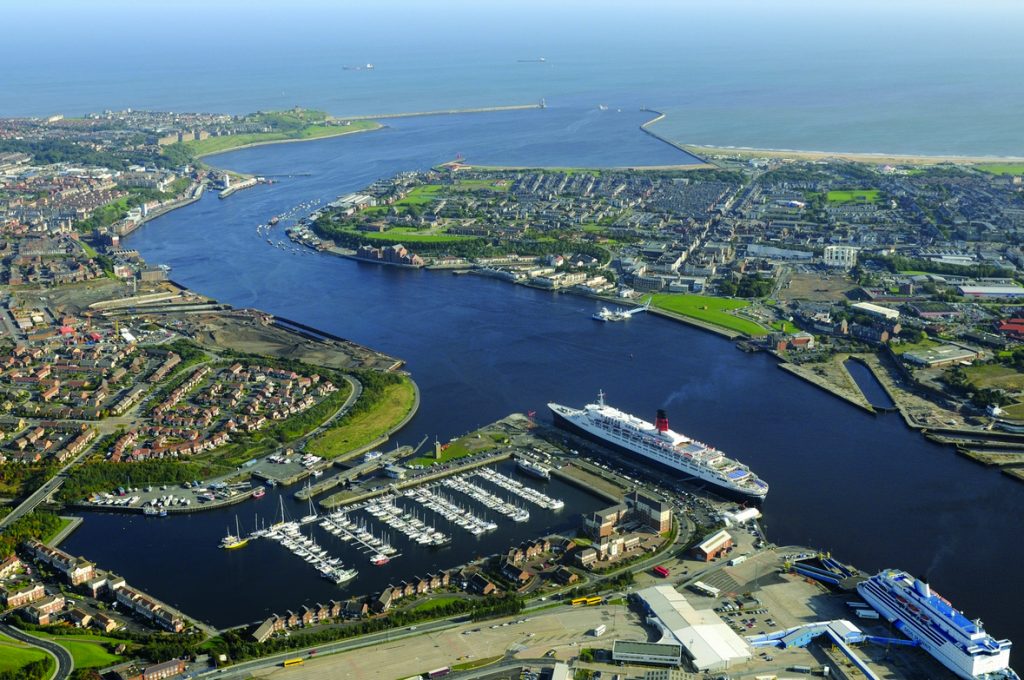Championing our Estuarine Wetlands

Photo by Matt Simms
When you think of wetlands do images of beautiful lakes and babbling brooks spring to mind? Not many will imagine their local estuary as an iconic wetland with intrinsic value for people and wildlife.
The Tyne Estuary Partnership (TEP) is working to address this issue and create a healthy and vibrant River Tyne Estuary.
The TEP will use innovative nature based solutions to deliver transformative change to the heritage of the Tyne Estuary; its landscape, its nature and its people. It will revive the hard engineered estuary edges by installing unique structures, replace lost intertidal habitat, and provide refuges for threatened wildlife whilst demonstrating the potential of the Tyne to its residents.
With this investment, it will become a haven for nature and the wider community. It will also bring social, economic, health and wellbeing benefits whilst providing mitigation for the various impacts on the heritage of the estuary.
The Tyne is one of the most iconic rivers in the UK; its estuary reaches 38km from the mouth to Wylam. The Estuary’s industrial, maritime, transport and social heritage is as renowned as its present day iconic image.
The 19th Century saw the channel straightened and deepened, bridges replaced & water contaminated. The landscape and its wildlife was adversely affected with islands, habitats, species and biodiversity lost. Gone were the rivers salmon, oysters, otters and terns, leaving a black desolate river void of most life!
The area’s built and natural heritage has recovered somewhat but it is still at risk from modern industry, inland farming, historic mining and brownfield regeneration. It is failing the EU Water Framework Directive criteria for being in good ecological status.
The Partnership has secured initial funding from the Environment Agency to deliver the following:
- Restore lost intertidal habitats, improve water quality, increase biodiversity
- Install approx. 2 capital enhancements developing a rich well connected blue/green corridor
- Create a strong, strategic, influential partnership to facilitate long term environmental, economic, social, heritage and cultural enhancement of the estuary
- Connect the natural and built heritage of the maritime landscape and its people
- Leading on a multi-level collaborative approach to embed green infrastructure in new/existing developments
And Groundwork North East and Cumbria will be looking to other external sources for additional funding to implement further enhancements and engage local communities in the heritage of the Tyne Estuary.
As a result we hope to deliver the following:
- Approximately 80km of estuary edge enhancement, improving the appearance and perception of the Tyne Estuary
- Wildlife will benefit from interventions; key marine/terrestrial flora and fauna increasing
- Enhancements inherently beautiful, making the estuary more attractive with better views and inspiring interpretation; improving sense of place – to live, work or visit
- Nature based solutions providing carbon storage, improved air quality and environmentally sustainable development
- People will learn about the heritage through formal/informal educational opportunities and share experiences with a wider audience
- Connect people with the River Tyne through new river based activities, walking/cycling trails or stewardship opportunities and report a greater sense of wellbeing and appreciation of the area
- Wider range of people will take part in our innovative activities, using arts, culture and sport to engage with marginalised communities
- Skills development, citizen science projects, training of volunteers, apprentices, students and businesses so that the heritage is in a better maintained and explained
- Invest resources into the local area to benefit its people, wildlife and the economy
- Boost the local economy through improving rental/commercial value and developing tourism
- Championing nature/landscape at a strategic level changing the planning/development process within local authorities, developers and government agencies to facilitate the use of blue/green infrastructure
- Monitor ecological and archaeological value of the maritime landscape and its hinterland including Newburn Battlefield.
- External evaluation to improve and share learning
With the focus on climate, the environment and the pressures of urban development now is the ideal time to ‘give back’ and by delivering the above we can help to restore the pre-industrial river landscape, nature and civic pride before it is lost.
If you would like to more information please check out the website https://www.groundwork.org.uk/projects/tyne-estuary-partnership/
Or contact Hellen Hornby on 01642 815663 or email tyne.estuary@groundwork.org.uk
